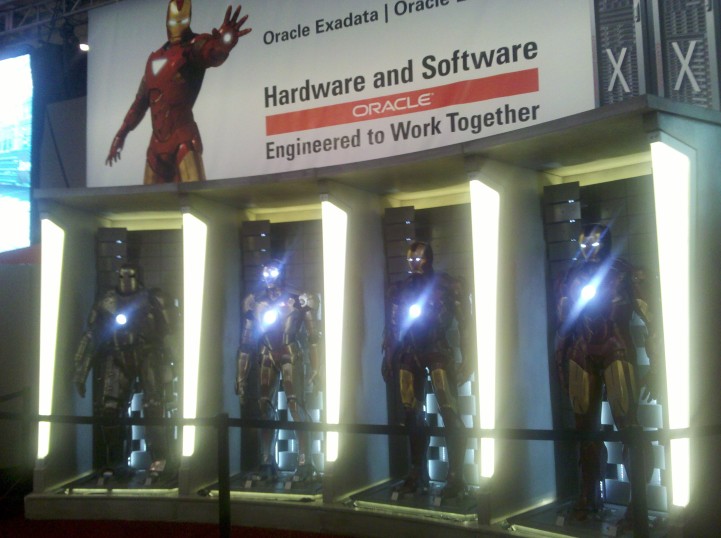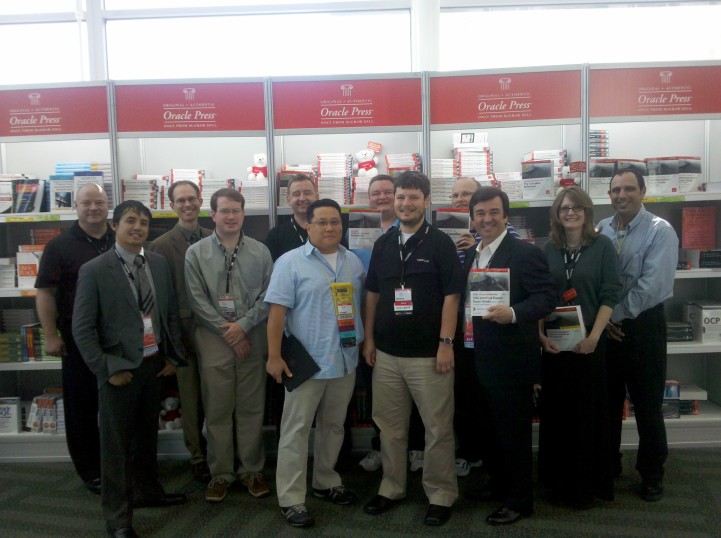Signing books at Oracle Open World 2010.
From September 22, 2010.

Tech. Biz. Culture. Law.
Signing books at Oracle Open World 2010.
From September 22, 2010.

A couple of weeks ago I was in Dubrovnik, Croatia, and departed to attend the Oracle Open World conference in San Francisco, a rather long flight. While on the plane I got a chance to see the recent movie “Iron Man 2”, which features a cameo appearance by Larry Ellison. As I was sitting on the plane, somewhere over the Atlantic Ocean and bound for California, I thought “there you go, I’m sure we’ll hear about this at the Oracle conference.
Sure enough, as I walked into Hall D at the Moscone Center, here was the big display that remained for the entire conference just outside the keynote presentations:

And just up the escalator from the Iron Man display, Larry Ellison made sure we all got a chance to see the America’s Cup trophy he won back in February:

All very impressive. And the technical content was just as impressive.
I first started attending Oracle World conferences before they were called “Open World”, back when digit heads dominated the audience and most of the interest was in development tools. Today’s Oracle Corporation is much the same company with a dramatically broader and more comprehensive scope. Larry Ellison has dabbled in hardware in the past, and a couple of years ago Oracle began teaming with companies like HP to collaborate on some radical hardware architectures that achieved performance improvements in orders of magnitude greater than industry standards.
But thanks to their recent acquisition of Sun Microsystems, Oracle is in the hardware business in a more substantial manner than ever before.
All good database administrators know that data in RAM (Random Access Memory) processes much faster than data stored on a hard drive. Tuning a computer for performance has always included a step to review the management of RAM and hard drive storage of any database.
But in Oracle’s Exadata machines, they have taken the rather obvious step to increase RAM quite dramatically and eliminate the need for swapping information between the faster RAM and slower hard drives. I say “the rather obvious step”, but the fact is that nobody has done this before. It seems obvious in retrospect.
By building a machine with immensely large RAM – the latest Exadata machine revealed in September features two terabytes of RAM – Oracle has led the charge and increased benchmark speeds for database speed by orders of magnitude. It’s a brilliant move and one that has generated a rather healthy order backlog for their new Exadata machines.
The basic idea is to run the entire database in fast memory. It’s an obvious and brilliant move. Demand for the machines is huge and I’m sure will grow. As usual, Oracle is blazing a new trail that I’m sure industry will eventually follow.
While I was at the conference, on Wednesday, September 29, I participated in a Meet the Author event in the book store, a rather popular area at the conference. There I got a chance to meet and greet readers of Oracle Press books, and schmooze with other legendary Oracle Press / McGraw-Hill authors.

I’m in the picture above, third from the right.
This is definitely a great group of outstanding authors, a talented collection of Oracle professionals, and a fun and gracious group of people, I had a great time seeing old friends and colleagues and building new relationships.